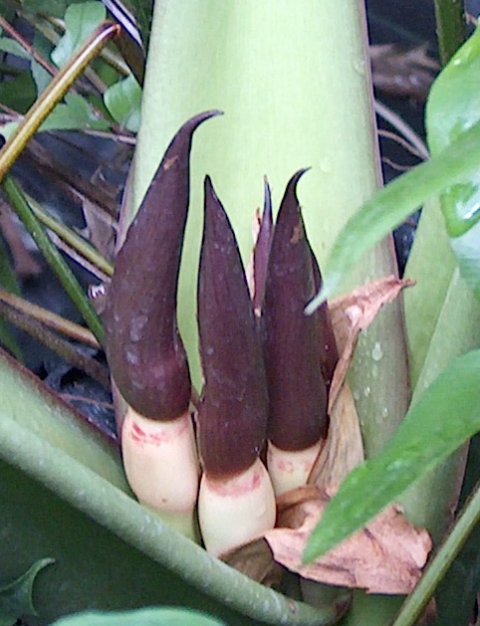Alocasia robusta

After growing one of the largest, if not the largest, Alocasia robusta specimens in the continental United States in 2007 (see picture above), we had high hopes of seeing inflorescences in early 2008. In January, however, a cold snap set the plant back, nearly defoliating it and halting all growth for several weeks. Our concern was relatively short-lived, though, because after producing three leaves, each much smaller than the 2007 summer leaves, the plant began entering a blooming cycle.

Above you can see the cluster of unopened inflorescences just visible a few days before the opening of the first inflorescence.

The picture above shows how the cluster looked with the third inflorescence open, two previous ones visible and many future ones to follow. The spathe on the open one had been cut away in the pistillate zone (hidden by the fern fiddlehead), enabling me to place fresh pollen of A. portei onto the pistil heads the morning of April 4, 2008.
Note the fern fiddlehead in the picture; we are still growing the A. robusta together with the Nephrolepis biserrata 'Macho Fern' with success, along with periodic applications of bioprotective microbes as supplied in a formulation called Plant Growth Activator.
The quantity of blooms is enabling us to perform a multitude of crosses, including A. portei, A. inoranta, A. macrorrhizos 'Borneo Giant', A. odora, A. macrorrhizos 'Big Mac', Alocasia 'Imperial Giant' and A. x calidora F2 selections. Time will tell if any of these attempts yield fruit.
See the Alocasia robusta species page!
| In the Lab | In the Field | The Species | Fruiting | The Hybrids |